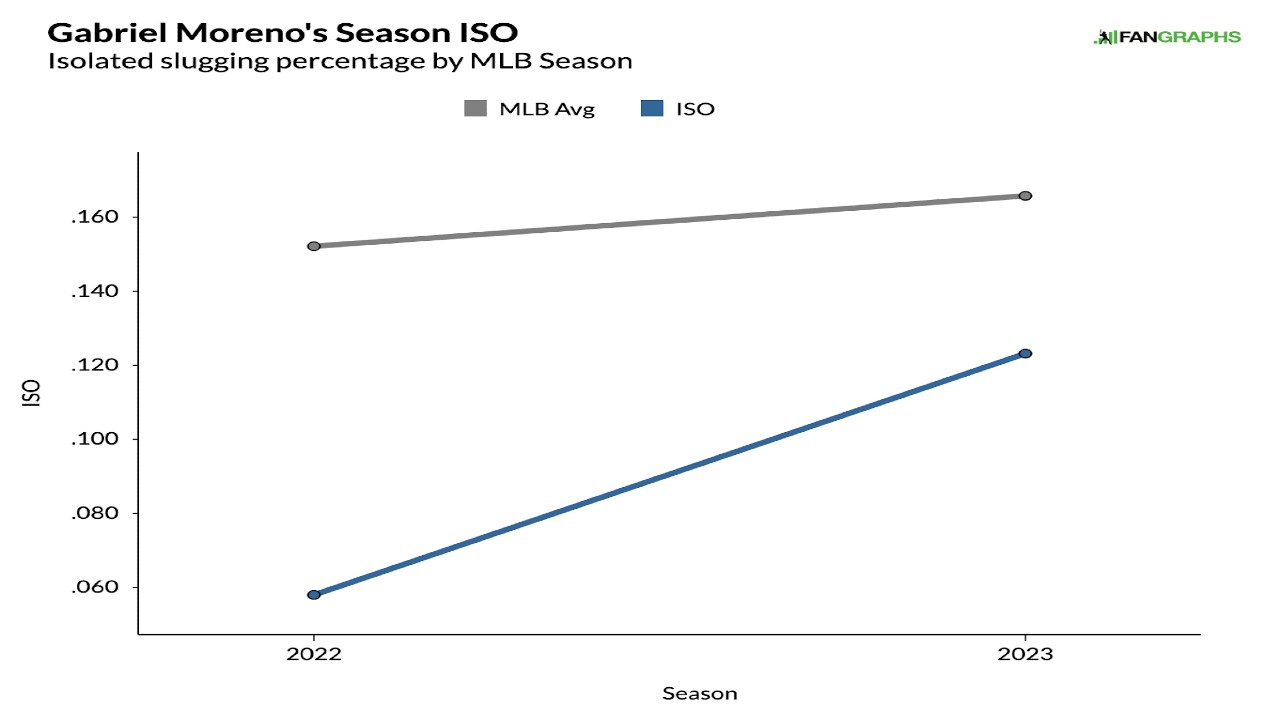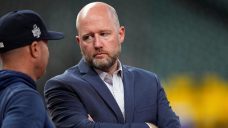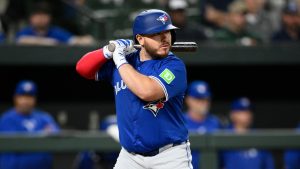When the Toronto Blue Jays traded Gabriel Moreno and Lourdes Gurriel Jr. to the Arizona Diamondbacks for Daulton Varsho last off-season, the team prioritized adding a long-term piece over immediate-term star power.
At the time of the deal, Moreno’s stock was extremely high and the Blue Jays likely could’ve cashed him in for a higher-profile player than Varsho with less term. Toronto figured that four years of Varsho — who fit the Blue Jays’ need for another left-handed bat and improved outfield defence — was more valuable than a player who would give them team a boost for a couple of years.
It’s unsurprising that when Blue Jays president Mark Shapiro briefly touched on the Moreno-Varsho deal in his end-of-season address he took a long view of it — saying it was still a good trade and emphasizing that it would take years to evaluate it properly.
That may be true, but as the Diamondbacks fight it out in the NLCS with Moreno slugging .609 in the post-season, it’s easy to see why the move’s approval rating is miniscule within the Blue Jays fanbase.
You can clearly chalk up 2023 as a loss for Toronto on the transaction. Moreno held his own offensively in his first full season (103 wRC+) and showed himself to be the best throwing catcher in the majors. Gurriel appeared in the All-Star Game and produced a similar all-around value (2.1 fWAR) to Varsho (2.1 fWAR).
If we accept the premise that the Blue Jays are losing this trade now, the question becomes whether there’s a reasonable path to the deal not going down as a major misstep for the team.
That would take some significant improvement from Varsho, which is fair to expect. This is a player who hit .239/.308/.440 between 2021 and 2022, which combined with his stellar glovework resulted in 7.0 fWAR — the 46th-best total among all position players.
It seems likely he’ll bounce back from a 85 wRC+ season, especially considering his walk and strikeout rates were approximately the same as 2022, and his Statcast numbers were stable.
Varsho’s 2023 has the look of an anomalous off year, especially considering he joined a number of Blue Jays in struggling to hit at the new-look Rogers Centre (.574 OPS) while producing at a solid clip on the road (.761 OPS).
The outfielder will also presumably have a chance to play centre field more regularly with Kevin Kiermaier hitting free agency. That could allow him to accumulate even more defensive value than usual as he’s never had a full season at the premium position, despite thriving there over the course of his career (+20 OAA in 1152.1 innings).
Having Varsho instead of Moreno also allows the Blue Jays to keep rolling out the undoubtedly effective duo of Alejandro Kirk and Danny Jansen at catcher. With those two behind the dish, Toronto’s backstops have combined for a 123 wRC+ and 11.5 WAR over the past two years, the second-best totals in the majors.
As good as Moreno is, turning over the catching job to him would be unlikely to yield results that strong. His 103 wRC+ in his rookie season came partially due to the 23-year-old outperforming his expected numbers, and power remains a worry for him despite his playoff outburst. Moreno had just seven home runs during the regular season, and four in 340 pro plate appearances last year.

That could limit his offensive potential, particularly because his offence isn’t supplemented by a strong walk rate, like Kirk’s is.
If Varsho’s offence bounces back a touch, and he continues to succeed in centre, there will be an argument to make that the Blue Jays will be better off with the outfielder in the lineup and their current duo of catchers than they would be with Moreno and one of their current catchers, a lower-ceiling option in centre, plus whatever they might’ve gotten for Jansen or Kirk.
That’s relatively tortured logic, though, because it ignores all of the opportunity costs associated with trading Moreno.
Swapping the young catcher for Varsho — presuming he bounces back — might be an upgrade for the Blue Jays as they are specifically constructed, but there are countless options for re-jigging the team if they’d gone in another direction. There are also plenty of other players they might’ve gotten for Moreno instead of Varsho. Doing this deal and not doing it weren’t the only two things on the table.
It’s impossible to compare all of the things the team conceivably could’ve done with what they did, but it does seem unlikely that forging their current path was the optimal route.
Even leaving Gurriel aside for a moment, the Blue Jays traded at least six years of a promising 22-year-old catcher and four years of a 26-year-old outfielder. That’s the type of deal that needs to pay off early to make sense unless there is a massive talent gap between the players — and year one didn’t go well.
This could wind up being a good trade for the Blue Jays in the sense that Varsho is a better fit for the team than Moreno was, and he helps them win — but even if it reaches that standard that won’t make it a wise deal by definition. By that logic, Toronto could’ve justified trading Moreno for a year or two of a high-leverage reliever.
Perhaps the simplest way to think about it is this. If the Blue Jays called up the Diamondbacks in the off-season and tried to trade Varsho back for Moreno they would be laughed at and hung up on. Or they would’ve been hung up on, then laughed at afterwards.
That’s a solid indication of where the deal stands.








COMMENTS
When submitting content, please abide by our submission guidelines, and avoid posting profanity, personal attacks or harassment. Should you violate our submissions guidelines, we reserve the right to remove your comments and block your account. Sportsnet reserves the right to close a story’s comment section at any time.